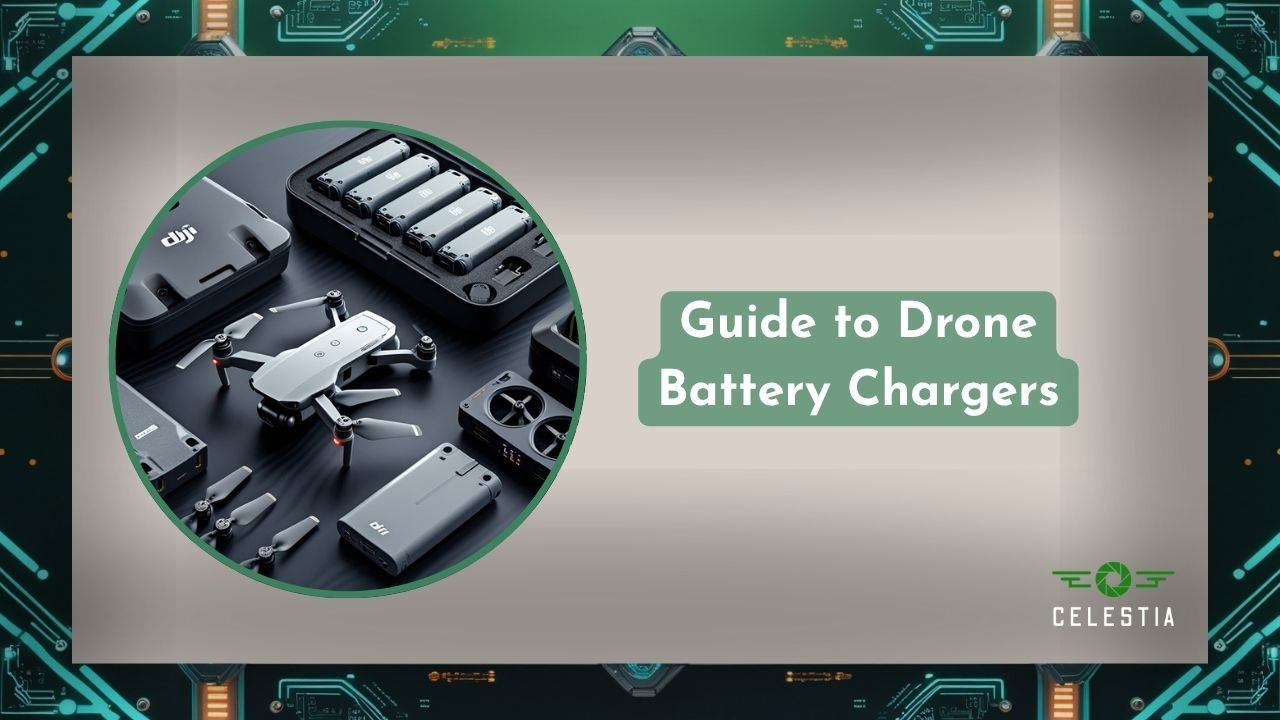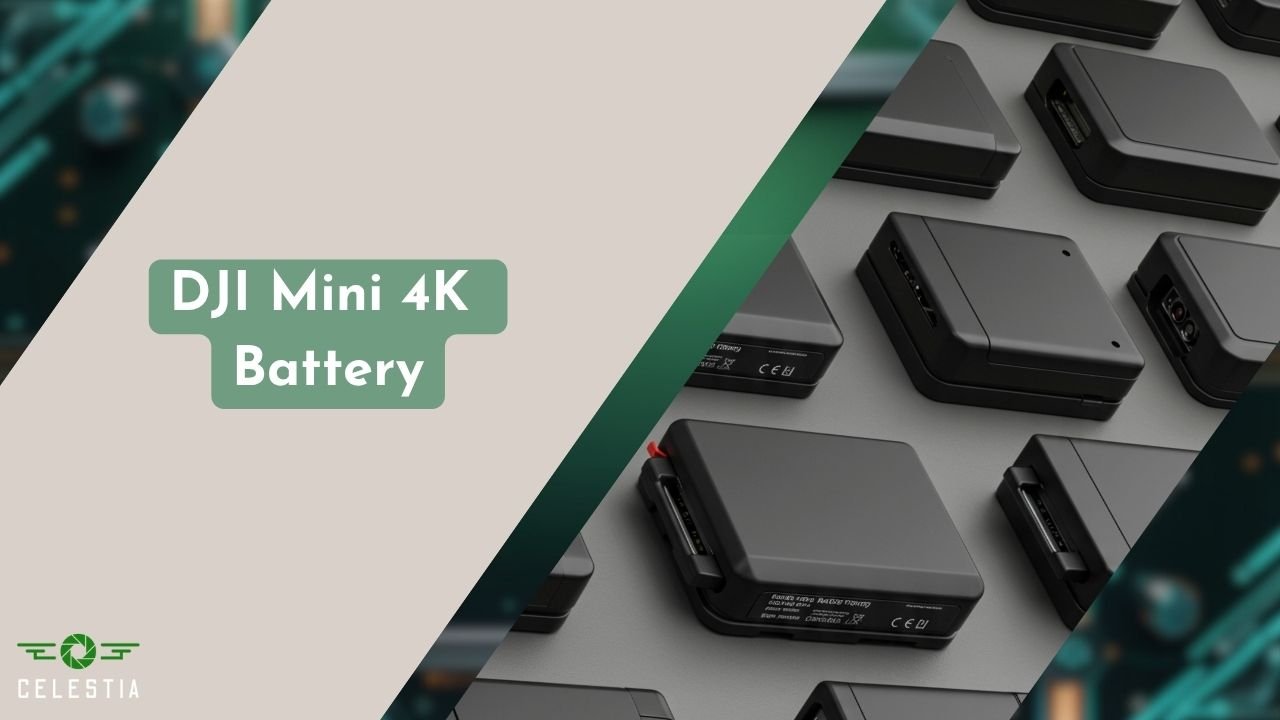
Drones have revolutionized industries like photography, agriculture, and logistics, but their performance heavily relies on one critical component: the battery. A drone battery charger is an essential tool for every drone enthusiast or professional, ensuring your drone stays powered and ready for action. In this comprehensive guide, we’ll explore everything you need to know about drone battery chargers, including types, features, and best practices. Whether you’re looking for a 6s LiPo charger, an FPV drone battery charger, or just general drone chargers, this guide has you covered.
DroneCelestia’s Charger Care Service
Ensure your drone battery chargers perform at their best with DroneCelestia’s Charger Care Service. Our FAA Part 107-certified team, with over 10 years of drone expertise, offers professional maintenance for chargers like DJI Mavic and BetaFPV models. We diagnose issues, clean connectors, and optimize performance to extend battery life and ensure safe charging. Whether you’re a hobbyist or a commercial pilot, our service keeps your drones airborne. Download our free Drone Battery Charger Maintenance Checklist below to keep your chargers in top shape!
Why Drone Battery Chargers Matter
Drone batteries, especially LiPo (Lithium Polymer) and Li-ion (Lithium-Ion) batteries, are the lifeblood of your drone. However, improper charging can lead to reduced battery life, safety hazards, or even complete failure. A high-quality drone battery charger ensures:
- Optimal Performance: Proper charging maintains battery health and maximizes flight time.
- Safety: Advanced chargers come with features like overcharge protection and temperature monitoring.
- Convenience: Fast-charging capabilities and multi-port options save time and effort.
Types of Drone Battery Chargers Explained
When it comes to powering your drone, not all drone battery chargers are the same. The type of charger you choose depends on your needs, budget, and level of expertise. Whether you’re a beginner, a professional, or an FPV drone enthusiast, understanding the different types of chargers, including those compatible with battery Mini Mavic Pro drone accessories, will help you make an informed decision. Below is a detailed explanation of the most common types of drone battery chargers, their features, and who they’re best suited for.
Basic Chargers
- Features: Simple, affordable, and easy to use.
- Best For: Beginners or casual drone users.
- Limitations: Limited features and slower charging speeds.
Advanced Chargers
- Features: Multi-port charging, balancing, and fast-charging capabilities.
- Best For: Intermediate users who need faster and more efficient charging.
Smart Chargers
- Features: Integrated microprocessors, automatic voltage detection, and safety features like overcharge protection.
- Best For: Professionals and serious enthusiasts.
Portable Chargers
- Features: Compact, lightweight, and often solar-powered.
- Best For: On-the-go charging during outdoor adventures.
Custom Chargers
- Features: Designed for specific drone models or high-end requirements.
- Best For: Professionals with specialized needs.
Key Features to Look for in a Drone Battery Charger
When selecting a drone battery charger, it’s essential to consider several key features to ensure you get the best performance, safety, and convenience. Here’s a detailed explanation of each feature to help you make an informed decision:
1. Compatibility
Compatibility is the most critical factor when choosing a drone battery charger. Not all chargers work with every type of battery, so you need to ensure the charger matches your drone’s battery specifications.
- Battery Type: Different drones use different battery chemistries, such as LiPo (Lithium Polymer), Li-ion (Lithium-Ion), or NiMH (Nickel-Metal Hydride). For example, if you have a 6s LiPo battery, you’ll need a 6s LiPo charger.
- Voltage and Capacity: Check the voltage (e.g., 11.1V for a 3s LiPo) and capacity (e.g., 3000mAh) of your battery. The charger must support these specifications.
- Connector Type: Ensure the charger has the correct connector for your battery, such as XT60, JST, or EC3. Using an incompatible connector can damage the battery or charger.
Why It Matters: Using an incompatible charger can lead to improper charging, reduced battery life, or even safety hazards like overheating or explosions.
2. Charging Speed
Charging speed determines how quickly your drone battery can be fully charged. While fast charging is convenient, it’s essential to balance speed with battery health.
- Fast Charging: Some chargers offer fast-charging capabilities, which can reduce charging time significantly. For example, a high-quality 6s LiPo battery charger can charge a 3000mAh battery in under an hour.
- Balanced Charging: Fast charging should not compromise the battery’s health. Look for chargers that balance speed with safety features to prevent overcharging or overheating.
Why It Matters: Overcharging or charging too quickly can damage the battery cells, reducing their lifespan and performance. A good charger will optimize charging speed without compromising safety.
3. Safety Features
Safety is paramount when dealing with drone batteries, especially LiPo batteries, which are prone to swelling, overheating, or even catching fire if not handled properly. Look for chargers with the following safety features:
- Overcharge Protection: Prevents the battery from being charged beyond its capacity, which can cause overheating or explosions.
- Short-Circuit Prevention: Protects the battery and charger from damage in case of a short circuit.
- Temperature Monitoring: Monitors the battery’s temperature during charging and stops the process if it gets too hot.
- Auto-Shutoff: Automatically stops charging once the battery is fully charged.
Why It Matters: Safety features ensure that your battery and charger operate within safe limits, reducing the risk of accidents and extending the lifespan of your equipment.
4. Portability
If you’re a frequent traveler or often fly your drone in remote locations, portability is a crucial factor.
- Lightweight and Compact: Portable chargers are designed to be small and lightweight, making them easy to carry in your drone bag.
- Power Source Options: Some portable chargers can be powered by car batteries or solar panels, making them ideal for outdoor use.
- On-the-Go Charging: Portable chargers allow you to recharge your drone batteries while you’re away from a power outlet, ensuring you never run out of power during a flight session.
Why It Matters: Portability ensures you can charge your batteries wherever you are, whether you’re on a hiking trip or at a remote filming location.
5. User Interface
A user-friendly interface makes the charging process easier and more efficient, especially for beginners.
- LCD Display: An LCD screen provides real-time information about the charging process, such as voltage, current, and charging time.
- Ease of Use: Intuitive controls and clear menus make it easy to set up and monitor the charging process.
- Customizable Settings: Advanced chargers allow you to customize charging parameters, such as charging speed or discharge rate, to suit your specific needs.
Why It Matters: A good user interface ensures that even beginners can operate the charger safely and effectively, while advanced users can fine-tune settings for optimal performance.
Summary Table: Key Features at a Glance
| Feature | What to Look For | Why It Matters |
| Compatibility | Matches battery type, voltage, capacity, and connector type (e.g., XT60, JST). | Ensures safe and efficient charging. |
| Charging Speed | Fast-charging capabilities without compromising battery health. | Saves time while maintaining battery longevity. |
| Safety Features | Overcharge protection, short-circuit prevention, temperature monitoring, auto-shutoff. | Prevents accidents and extends battery life. |
| Portability | Lightweight, compact, and versatile power options (e.g., solar, car battery). | Enables charging on the go. |
| User Interface | LCD display, intuitive controls, and customizable settings. | Makes charging easier and more efficient for all users. |
How to Choose the Right Drone Battery Charger
1. Assess Your Needs
Are you a hobbyist or a professional? How often do you use your drone? Answering these questions will help you determine the right charger for your needs.
2. Budget Considerations
While entry-level chargers are affordable, investing in a high-quality charger can save you money in the long run by extending battery life.
3. Compatibility
Always check your drone’s manual for recommended chargers. For example, a 6s LiPo charger is ideal for 6s LiPo batteries.
4. Future-Proofing
Consider a charger that can handle multiple battery types and capacities, especially if you plan to upgrade your drone in the future.
Best Practices for Charging Drone Batteries
Charging your drone batteries properly is crucial for maintaining their performance, safety, and longevity. Here’s a detailed explanation of the best practices for charging drone batteries:
1. Pre-Charging Checklist
Inspect the Battery for Damage or Swelling
Before plugging in your battery, always inspect it for any signs of damage. Look for:
- Physical Damage: Cracks, dents, or punctures in the battery casing.
- Swelling: A swollen battery is a clear sign of internal damage and should not be charged. Swelling occurs due to gas buildup inside the battery, which can lead to leaks or even explosions.
- Corrosion or Leaks: Check for any unusual residue or liquid around the battery terminals.
If you notice any of these issues, stop using the battery immediately and dispose of it safely according to local regulations.
Ensure the Charger and Battery Connectors Are Clean and Secure
- Clean Connectors: Dust, dirt, or debris on the connectors can interfere with the charging process and even cause short circuits. Use a clean, dry cloth to wipe the connectors.
- Secure Connections: Make sure the battery is properly connected to the charger. Loose connections can lead to incomplete charging or overheating.
2. Charging Environment
Charge in a Well-Ventilated Area
- Why It Matters: Drone batteries, especially LiPo (Lithium Polymer) batteries, can generate heat during charging. Charging in a well-ventilated area helps dissipate this heat and reduces the risk of overheating.
- Ideal Location: Use a non-flammable surface like a concrete floor or a fireproof charging bag. Avoid charging on carpets, wooden surfaces, or near flammable materials.
Avoid Extreme Temperatures
- High Temperatures: Charging in hot environments can cause the battery to overheat, leading to reduced performance or even fire hazards.
- Low Temperatures: Charging in cold environments can slow down the chemical reactions inside the battery, resulting in incomplete charging.
- Optimal Temperature Range: Most drone batteries charge best at room temperature (around 20-25°C or 68-77°F).
3. Monitoring the Process
Use Chargers with Monitoring Features
Modern drone battery chargers come with advanced features like:
- Voltage Monitoring: Ensures the battery is charged to the correct voltage.
- Temperature Monitoring: Detects overheating and stops charging if the battery gets too hot.
- Balancing: Ensures all cells in the battery are charged evenly, which is crucial for multi-cell batteries like 6s LiPo batteries.
These features help prevent overcharging, which can damage the battery or cause safety hazards.
Never Leave Batteries Charging Unattended
- Why It’s Important: Even with advanced chargers, there’s always a small risk of something going wrong. Staying nearby allows you to respond quickly if the battery starts overheating or swelling.
- Practical Tip: Set a timer to remind yourself when the charging process should be complete.
4. Storage Tips
Store Batteries at 40-60% Charge for Long-Term Storage
- Why It Matters: Storing a fully charged or completely drained battery for long periods can damage its internal chemistry. A charge level of 40-60% is ideal for maintaining battery health during storage.
- How to Achieve This: Use your charger’s storage mode, which automatically charges or discharges the battery to the optimal level.
Keep Them in a Cool, Dry Place
- Cool Environment: High temperatures can accelerate the degradation of the battery’s internal components. Store your batteries in a cool place, ideally below 25°C (77°F).
- Dry Environment: Moisture can cause corrosion on the battery terminals, leading to poor performance or even short circuits. Use airtight containers or fireproof bags to protect your batteries from humidity.
- Fireproof Storage: For added safety, consider storing your batteries in a fireproof LiPo battery bag or a metal container.
Additional Tips for Safe Charging
- Use the Right Charger: Always use a charger designed for your specific battery type (e.g., a 6s LiPo battery charger for 6s LiPo batteries).
- Avoid Overcharging: Most modern chargers have automatic shut-off features, but it’s still a good practice to monitor the charging process.
- Charge at the Right Rate: Charging at a rate higher than recommended can damage the battery. For example, a 3000mAh battery should be charged at 3A (1C rate) unless specified otherwise by the manufacturer.
- Dispose of Damaged Batteries Properly: If a battery is damaged, do not attempt to charge or use it. Follow local regulations for safe disposal.
Common Mistakes to Avoid
- Using Incompatible Chargers
Always use a charger designed for your battery type (e.g., a 6s LiPo battery charger for 6s LiPo batteries). - Ignoring Safety Features
Don’t disable safety features like overcharge protection. - Overcharging or Undercharging
Both can reduce battery life and performance. - Neglecting Maintenance
Regularly inspect your charger and batteries for wear and tear.
Top Drone Battery Chargers in 2025
Here are some of the best drone battery chargers on the market:
1. Hota D6 Pro
- Features: Dual-channel charging, 650W power output, and compatibility with multiple battery types.
- Best For: Professionals and advanced users.
2. ISDT Q6 Nano
- Features: Compact, lightweight, and supports up to 8s LiPo batteries.
- Best For: Portable charging on the go.
3. SkyRC T200
- Features: 200W power output, balancing charging, and safety features.
- Best For: Intermediate users.
4. Venom Pro Duo
- Features: Dual-port charging, LCD display, and compatibility with LiPo, Li-ion, and NiMH batteries.
- Best For: Hobbyists and professionals.
Maintenance and Care for Drone Battery Chargers
- Cleaning
Regularly clean the charger and connectors to prevent dust buildup. - Inspection
Check for signs of wear and tear, such as frayed cables or loose connectors. - Troubleshooting
If your charger isn’t working, consult the manual or contact the manufacturer. - Replacement
Replace your charger if it shows signs of damage or malfunction.
Frequently Asked Questions (FAQs)
1. What is the best charger for LiPo batteries?
A 6s LiPo charger like the Hota D6 Pro is ideal for LiPo batteries.
2. Can I use any charger for my drone battery?
No, always use a charger compatible with your battery type and specifications.
3. How long does it take to charge a drone battery?
Charging time depends on the battery capacity and charger speed. A 3000mAh battery typically takes 1-2 hours.
4. Is it safe to leave a drone battery charging overnight?
No, always monitor the charging process to avoid overcharging.
5. What should I do if my charger stops working?
Check the connections and consult the manual. If the issue persists, contact the manufacturer.
Conclusion
A drone battery charger is more than just a tool—it’s an investment in your drone’s performance and longevity, especially when paired with essential drone accessories like the DJI Mini 3 extra battery or DJI Mini 4 Pro parts. Whether you’re looking for a 6s LiPo charger, an FPV drone battery charger, or a general-purpose drone charger, choosing the right one can make all the difference. By following the tips and best practices outlined in this guide, you’ll ensure your drone stays powered, safe, and ready for any adventure, while keeping costs like the DJI Mini 3 extra battery cost in check.


